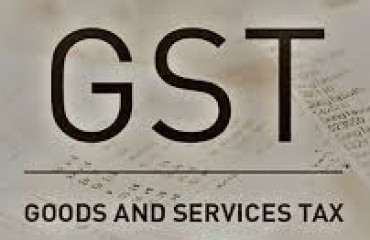
Nirmala Sitharaman has presented the last full budget of the second Narendra Modi government. The finance minister had a tricky balancing act between stabilizing public finances and supporting India’s economic recovery, with risks from tilting too far on either side.
Nirmala Sitharaman has presented the last full budget of the second Narendra Modi government. The finance minister had a tricky balancing act between stabilizing public finances and supporting India's economic recovery, with risks from tilting too far on either side.
Two underlying themes deserve attention. First, there is continuity. The budget strategy continues to focus on gradually bringing down the fiscal deficit while pivoting towards more capital spending. Second, the political economy of the budget is directed towards middle India, especially small enterprises as well as the lower deciles of the salaried class that have had a relatively bad run in recent years.
The finance minister has met the fiscal deficit target set last year, despite a large increase in the subsidy bill. This was possible because net taxes to the Union government this financial year will be around ₹1.52 trillion more than what was estimated in February 2022. The ability to stick to the deficit target adds to the growing credibility of Indian fiscal policy since 2019, perhaps one reason why the bond market held its ground despite the record borrowing needed to fund the fiscal gap. However, the Reserve Bank of India may have to occasionally step in over the next financial year to buy government bonds as part of its open market operations, thus easing liquidity when it is trying to tighten monetary policy.
I had argued in an earlier column that the time is not ripe for a sharp fiscal correction, given an anticipated domestic slowdown in the year ahead as well as the dark clouds over the global economy. The government will have to support aggregate demand as consumer demand weakens, business spending on new equipment is still not robust, and export markets are fragile. The decision to cut the fiscal deficit by a modest half percentage point of gross domestic product (GDP) is thus a reasonable one.
Unbundling the fiscal correction provides some useful insights. The Modi government has decided to increase its own capital spending by ₹2.82 trillion. Tax cuts aimed at the middle class will also mean a revenue loss of around ₹35,000 crore. These will largely be covered by a ₹2.4 trillion reduction in spending on subsidies. The recent restructuring of the food subsidy as well as an anticipated fall in fertilizer subsidy because of lower global crude oil prices—which together add up to budgeted savings of 0.8% of GDP in 2023-24—will hopefully create adequate financial space for the government to reduce its fiscal deficit by 0.5 percentage points while increasing spending in select areas.
The eventual goal of fiscal policy over the rest of the decade should be to stabilize the ratio of public debt to GDP, which had shot up to record levels because of the pandemic shock. The burden is evident. Interest payments on the stock of public debt issued by the Union government now soak up nearly half its net tax collections, leaving less money for public goods, defence, infrastructure and welfare programmes.
As nominal GDP normalizes, and perhaps even slips back into single digits, the government deficit after taking interest payments out of the picture—aka the primary deficit—will have to play a more important role to stabilize public finances. The primary deficit target for 2023-24 of 2.3% of GDP, down from 3% of GDP in 2022-23, is thus a step in the right direction. In plain English, the government will have to remain more focused on setting its financial house in order as the opportunity for inflating away the burden of past debt narrows.
The new budget has been presented in the last stretch leading up to general elections that are scheduled in the first half of 2024. The Modi government has held its nerve by not going on a directionless spending spree, though the bond market will be on alert in case there are any pre-election fiscal announcements outside the budget.
The clear attempt to support micro, small and medium enterprises (MSMEs) is interesting, through credit guarantees, relief from security deposits forfeited for failing to execute contracts during the pandemic and an overall attempt to ease their regulatory burden. Small enterprises have been particularly hurt by successive shocks such as demonetization, the messy introduction of the goods and services tax (GST) and then the pandemic.
The other constituency that has been given relief is the salaried class, which has been hit by a double whammy of weak wage growth in the midst of a profit-led economic recovery and high inflation. The nudge to citizens to opt for lower tax rates without any exemptions will hopefully work this time around. The amount of revenue forgone is small, however. So, it will not do much to move the fiscal needle. The broader goal of Indian tax policy should be to collect more direct taxes while bringing down rates of indirect taxation, especially GST. Thankfully, there was no move to increase import tariffs to deal with the wide trade deficit, an implicit recognition of the fact that high import taxes are a barrier to higher exports in a world of global supply chains.
The past three years saw two exogenous shocks—the pandemic followed by the war in Ukraine. The Indian fiscal response has been better calibrated than in many other major economies, and the government seems committed to staying on the same path. That is welcome.
Niranjan Rajadhyaksha is CEO and senior fellow at Artha India Research Advisors, and a member of the academic advisory board of the Meghnad Desai Academy of Economics.
